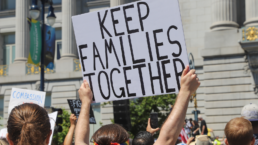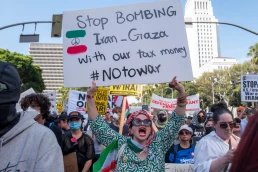In cells built for adults, one-third are child migrants. Border authorities have resisted improving conditions for minors in crowded, freezing facilities.
By Anna Flagg and Julia Preston, The Marshall Project
During their harrowing journey from Venezuela to the Texas border, the three Zaragoza children liked to imagine the refuge they would find when they reached the United States, a place where they would finally be free from hunger and police harassment and could simply be kids.

Instead, when they reached the border in March, they were detained — dirty with mud from the Rio Grande and shivering with cold — in frigid cinder block cells. They spent sleepless nights on cement floors, packed in with dozens of other children under the glare of white lights, with agents in green uniforms shouting orders.
The siblings were booked by officers who asked questions they didn’t understand and were told to sign documents in English they couldn’t read. Even after their release three days later, they feared the U.S. would never be the haven they had longed for.
Since early 2017, one of every three people held in a Border Patrol facility was a minor, a far bigger share than has been reported before now, according to an analysis by The Marshall Project of previously unpublished official records. Out of almost 2 million people detained by the Border Patrol from February 2017 through June 2021, more than 650,000 were under 18, the analysis showed.
Recent Posts
The Dangers Of Nuclear War Have Never Been Higher
July 16, 2025
Take Action Now Yet mainstream US media outlets and partisan politics are routinely oblivious to threat of oblivion.By Norman Solomon, The Nation…
‘Gaza Journalists Under Fire’, A Zero Hour Conversation With Robert Greenwald
July 16, 2025
Take Action Now Robert Greenwald appeared on The Zero Hour to discuss “Gaza: Journalists Under Fire,” his new documentary on the 200+…
Is A Citizens United 2.0 Right Around The Corner?
July 15, 2025
Take Action Now Is it possible for American democracy to be further degraded by the influence of billionaires? Thanks to champion of the working…
U.S. Leaders Gave Up On Diplomacy With Iran. We Must Make Them Return To It.
July 15, 2025
Take Action Now Building an antiwar movement means preventing the systemic U.S. aggression that creates the conditions for war.By Hanieh Jodat,…




